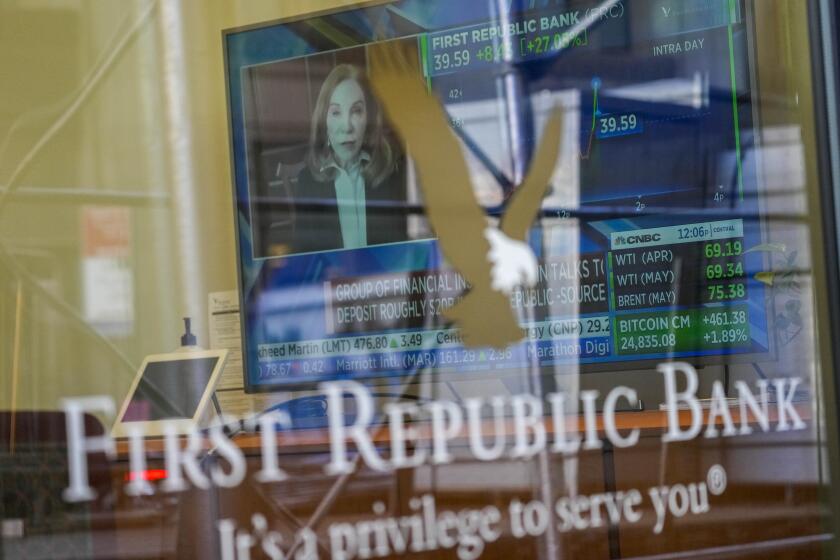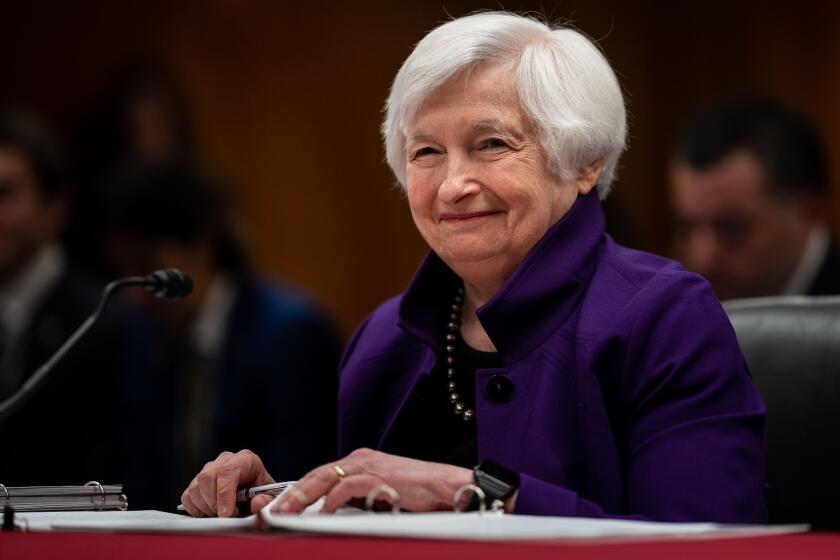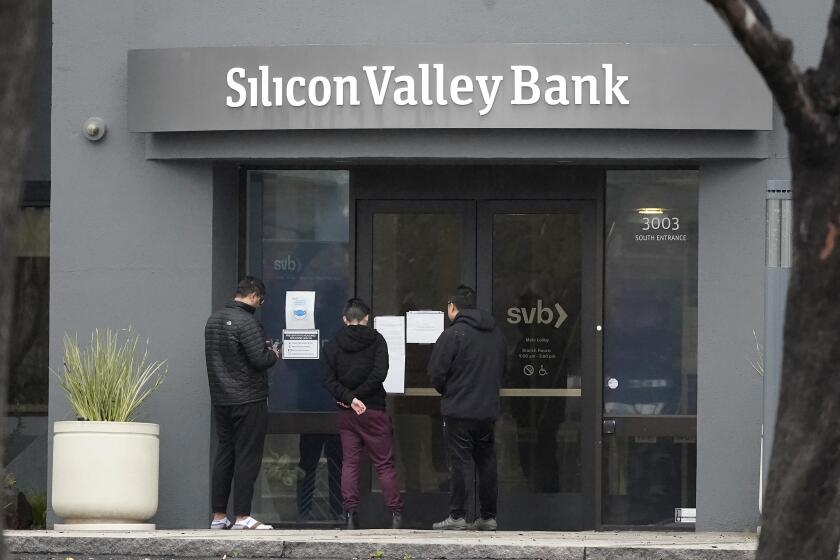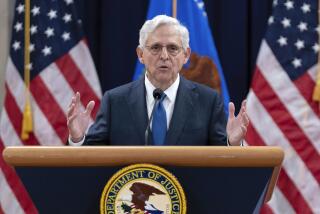Opinion: It’s not just First Republic that failed. It’s the whole banking system
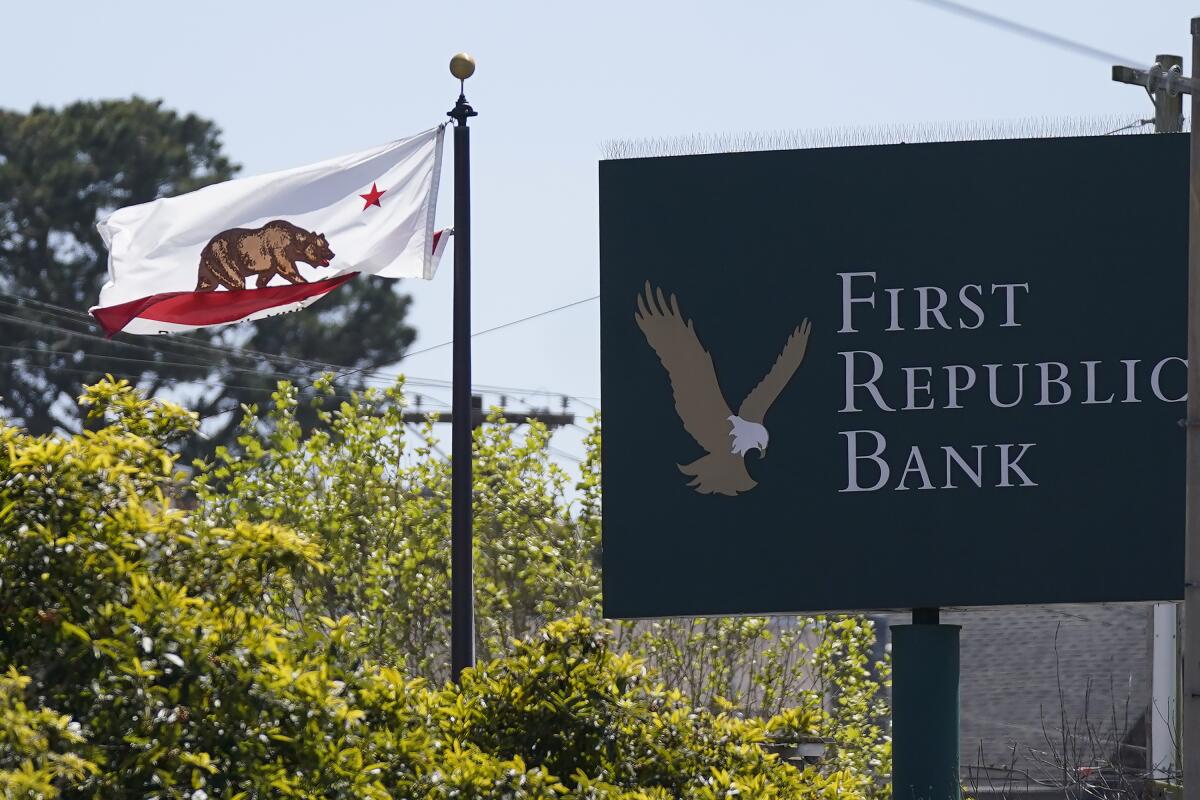
- Share via
First Republic Bank became the second-biggest bank failure in U.S. history after the lender was seized by the Federal Deposit Insurance Corp. and sold to JPMorgan Chase on Monday. First Republic is the latest victim of the panic that has roiled small and midsize banks since the failure of Silicon Valley Bank in March.
The collapse of Silicon Valley Bank and now First Republic underscores how the effect of risky decisions at one bank can quickly spread into the broader financial system. It should also provide the impetus for policymakers and regulators to address a systemic problem that has plagued the banking industry from the savings and loan crisis of the 1980s to the financial crisis of 2008 to the recent turmoil following Silicon Valley Bank’s demise: incentive structures that encourage excessive risk-taking.
Interventions in Silicon Valley Bank, Credit Suisse and others have revived a distracting, dangerous argument. Bank runs and failures are the greater risk.
The Federal Reserve’s top regulator seems to agree. On April 28, the central bank’s vice chair for supervision delivered a stinging report on the collapse of Silicon Valley Bank, blaming its failures on its weak risk management, as well as supervisory missteps.
In each of the financial upheavals since the 1980s, the common denominator was risk. Banks provided incentives that encouraged executives to take big risks to boost profits, with few consequences if their bets turned bad. In other words, all carrot and no stick.
The 2008 crisis is an obvious example. At all levels of mortgage financing — from Main Street lenders to Wall Street investment firms — executives prospered by taking excessive risks and passing them to someone else. Lenders passed mortgages made to people who could not afford them onto Wall Street firms, which in turn bundled those into securities to sell to investors. It all came crashing down when the housing bubble burst, followed by a wave of foreclosures.
After Silicon Valley Bank’s collapse, the government protected depositors. There’s a better way to protect regional banks in trouble.
Incentives rewarded short-term performance, and executives responded by taking bigger risks for immediate gains. At the Wall Street investment banks Bear Stearns and Lehman Bros., profits grew as the firms bundled increasingly risky loans into mortgage-backed securities to sell, buy and hold.
As foreclosures spread, the value of these securities plummeted, and Bear Stearns collapsed in early 2008, providing the spark of the financial crisis. Lehman failed in September of that year, paralyzing the global financial system and plunging the U.S. economy into the worst recession since the Great Depression.
Executives at the banks, however, had already cashed in, and none was held accountable. Researchers at Harvard University estimated that top executive teams at Bear Stearns and Lehman pocketed a combined $2.4 billion in cash bonuses and stock sales from 2000-08.
At Silicon Valley Bank, executives tied up the bank’s assets in long-term Treasury and mortgage-backed securities, failing to protect against rising interest rates that would undermine the value of these assets. The interest rate risk was particularly acute for Silicon Valley Bank, since a large share of depositors were start-ups, whose finances depend on investors’ access to cheap money.
When the Fed began raising interest rates last year, Silicon Valley Bank was doubly exposed. As start-ups’ fundraising slowed, they withdrew money, which required the bank to sell its long-term holdings at a loss to cover the withdrawals. When the extent of the bank’s losses became known, depositors lost trust, spurring a run that ended with its collapse.
Preventing bank runs is the immediate emergency, but the underlying problem that weakened Silicon Valley Bank — and may also leave other banks susceptible — has yet to be addressed.
For executives, however, there was little downside in discounting or even ignoring the risk of rising rates. The cash bonus of Silicon Valley Bank CEO Greg Becker more than doubled to $3 million in 2021 from $1.4 million in 2017, lifting his total earnings to $10 million, up 60% from four years earlier. Becker also sold nearly $30 million in stock over the last two years, including some $3.6 million in the days leading up to his bank’s failure.
The effect of the failure was not contained to that bank. Share prices of many midsize banks tumbled. Another American bank, Signature, collapsed days after Silicon Valley Bank did.
First Republic survived the initial panic in March after it was rescued by a consortium of major banks led by JPMorgan Chase, but the damage was already done. First Republic recently reported that depositors withdrew more than $100 billion in the six weeks following Silicon Valley Bank’s collapse, and on May 1, the FDIC seized control of the bank and engineered a sale to JPMorgan Chase.
The crisis isn’t over yet. Banks had more than $620 billion in unrealized losses at the end of 2022, largely because of rapidly rising interest rates.
So, what’s to be done? The bipartisan bill recently filed in Congress, the Failed Bank Executives Clawback, would be a good start. In the event of a bank failure, the legislation would empower regulators to claw back compensation received by bank executives in the five-year period preceding the failure.
Clawbacks, however, kick in only after the fact. To prevent risky behavior, regulators could require executive compensation to prioritize long-term performance over short-term gains. And new rules could restrict the ability of bank executives to take the money and run, including requiring executives to hold substantial portions of their stock and options until they retire.
The Fed’s new report on what led toSilicon Valley Bank’s failure points in this direction. The 102-page report recommends new limits on executive compensation, saying leaders “were not compensated to manage the bank’s risk,” as well as stronger stress-testing and higher liquidity requirements.
Those are also good steps, but probably not enough. Financial crises will continue to happen unless banks and bank executives have reason to consider the interest of the entire banking system, not just the short-term gains they can reap for themselves and their shareholders.
Alexandra Digby is an adjunct assistant professor of economics at the University of Rochester. Dollie Davis is associate dean of faculty and Robson Hiroshi Hatsukami Morgan is an assistant professor of social sciences at Minerva University. This article was produced in partnership with the Conversation.
More to Read
A cure for the common opinion
Get thought-provoking perspectives with our weekly newsletter.
You may occasionally receive promotional content from the Los Angeles Times.
